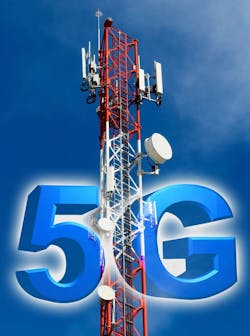Global tech market advisory firm ABI Research, in its latest report, states that 5G Fixed Wireless Access (FWA) will be the fastest-growing residential broadband segment, to increase at a CAGR of 71%, exceeding 58 million subscribers in 2026.
The analyst reports the worldwide residential broadband market reached a subscriber's base of over 1.1 billion in 2020, a 4% increase from the previous year. Not surprisingly, ABI notes the COVID-19 pandemic accelerated demand for broadband connectivity. The need for high-capacity residential broadband will remain strong, even after the pandemic recovery, says the analyst's latest research.
According to ABI Research:
Remote working, online learning, e-commerce, and virtual healthcare drove high-speed broadband demand throughout 2020. The significant increase in the use of internet-based home entertainment such as video streaming and online gaming also pushed existing broadband users to upgrade their broadband service to a higher-tier package, while households without broadband access signed up for new subscriptions.
"Increasing adoption of internet-connected devices, smart TVs, and smart home devices, as well as consumers' media consumption through internet applications, will continue to drive high-speed broadband adoption in the years to come. In addition, many businesses are allowing remote working for some of their employees after the pandemic, which will boost the need for home broadband services even further," says Khin Sandi Lynn, industry analyst at ABI Research.
To fulfill demand, the analyst notes that broadband operators are investing heavily in expanding higher-capacity broadband networks. While some cable operators continue to invest in and upgrade to the DOCSIS 3.1 specification, the cable standardization body, CableLabs, and other industry players are already working toward DOCSIS 4.0 technology.
"Although cable companies don't anticipate the need to deploy the new cable standard any time soon, Comcast has completed a lab test of DOCSIS 4.0 full-duplex system-on-chip from Broadband in April 2021. Cable companies are likely to stretch the life of the existing DOCSIS 3.1 standard for a few more years. However, DOCSIS 4.0 can support speeds of up to 10 Gbps downstream and 6 Gbps upstream, enabling improved customer experiences as well as the use of AR/VR or bandwidth-demanding services, which will certainly emerge in the future," adds ABI's Lynn.
Similarly, the new report notes that telcos continue to upgrade their xDSL to Fiber-to-the-Home (FTTH) networks. In addition, FWA services are a cost-effective alternative when the deployment of a high-speed fixed broadband network is not economically feasible, notes the researcher.
ABI Research projects that ongoing 5G network deployment alongside the development of extended 5G mmWave solutions will allow service providers to offer high-speed 5G FWA services in both urban and low-density areas. 5G FWA services are expected to represent 4% of residential broadband services in 2026, growing from less than 1% in 2020.
The new study further forecasts that as residential broadband penetration saturates mature markets, competition among broadband operators is likely to create challenges to maintain market shares.
"In addition to network upgrades, broadband operators need to invest in cutting-edge software and hardware to optimize network performance and support better user experiences. Providing advanced home networking devices, internet security, and home network self-diagnosis tools can help service providers reduce churn and improve average revenue per user," concludes ABI's Lynn.
ABI Research's Pay TV and Residential Broadband Subscriptions market data report is part of the company's Consumer Technologies research service. Learn more at www.abiresearch.com.
